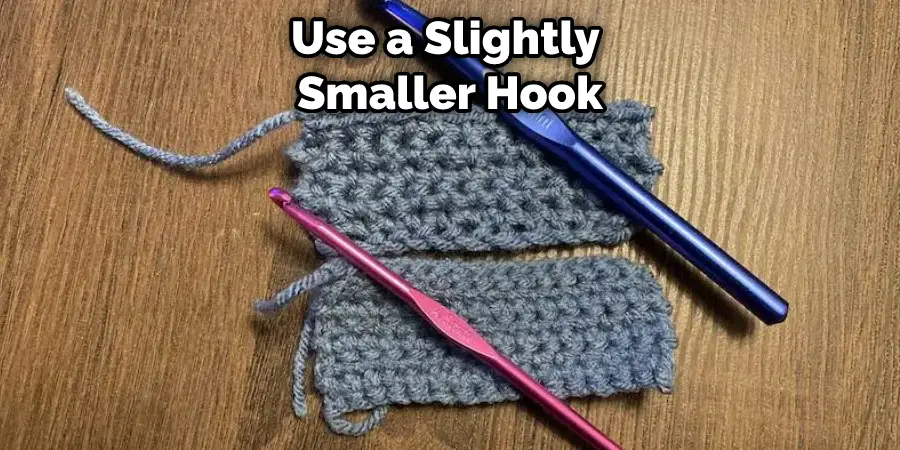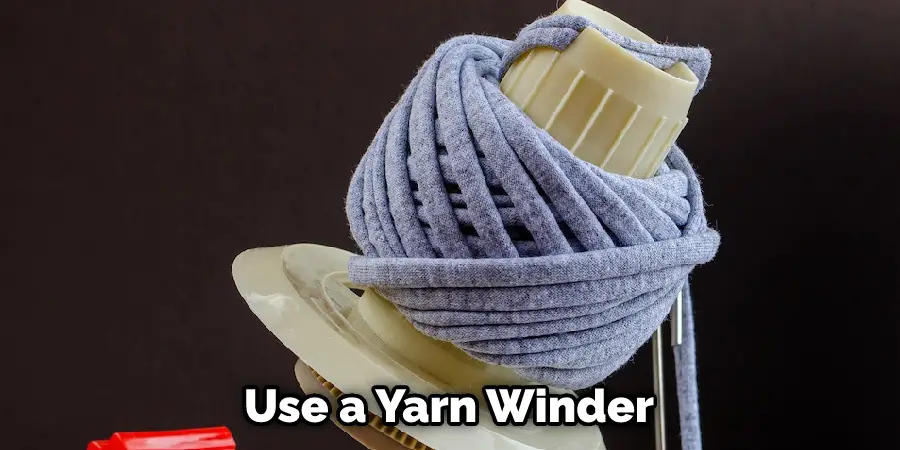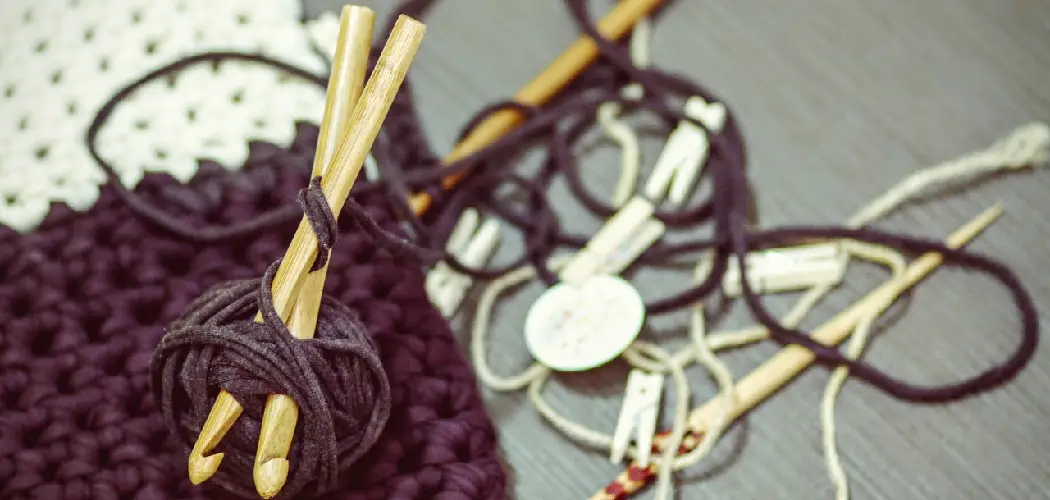Crocheting with two strands of yarn can add a beautiful dimension to your projects. It gives the fabric more texture, color, and body than when crocheting with just one strand. It also makes projects more durable and heavier, making them warmer and longer lasting. When working with two strands of yarn, you will need to take some extra considerations, such as yarn weight and drape.

Crocheting with two strands of yarn is a great way to add thickness, warmth, and texture to any project. If you want to make your crochet projects more special and unique, crocheting with two strands of yarn is a perfect choice. Using two strands of yarn in your crochet projects also provides some creative advantages. One of the main advantages of crocheting with two strands of yarn is that it allows you to mix different types, colors, and textures of yarn. In this blog post, You will learn in detail how to crochet with two strands of yarn.
Step by Step Processes for How to Crochet With Two Strands of Yarn
Step 1: Gather Your Materials
To crochet with two strands of yarn, you will need a crochet hook and two balls of the same type of yarn. Separate one strand from each ball of yarn and hold them together as if they were one strand.
Step 2: Create a Slip Knot
Start by making a slip knot on your crochet hook. The slip knot will help secure the yarn to the hook so that you can begin crocheting with two strands. Wrap the yarn around your index finger twice and create a loop. Take the end of the yarn and insert it through the loop, then pull it tight.
Step 3: Crochet Using Two Strands of Yarn
Now that your yarn is securely attached to the crochet hook, you can begin crocheting with two strands. Hold both strands together as if they were one, and insert the hook through a stitch on your work. Wrap the yarn around the hook and pull it through, then wrap the yarn again and draw it back through. Continue this process until you have reached the desired number of stitches.

Step 4: Switch Strands
Once you are done crocheting with two strands, switch to a single strand of yarn. Unhook one of the two strands of yarn and continue crocheting with the remaining strand. Once you have completed one row of crochet stitches using a single strand, switch back to two strands of yarn. Continue alternating between single and double strands in this way until your project is complete.
Step 5: Fasten Off
Once you have finished working with two strands of yarn, fasten off your project. Cut the end of your yarn, leaving a few inches, then pull the tail through the loop on your hook and pull it tight to secure it. To finish your project, weave in the ends of the yarn. Use a tapestry needle to weave the ends of the yarn into the back of your work once it is complete. This will help ensure that the yarn doesn’t unravel or come undone.
Step 6: Block Your Project
Blocking is an important step when crocheting with two strands of yarn. Blocking helps even out the stitches and gives your project a professional look. Place your project on a flat surface and use blocking wires or pins to hold each stitch in place while it dries.
Step 7: Enjoy Your Project
Once your project is complete, you can enjoy it for years to come. Keep your project clean and store it safely when not in use. The best way to become comfortable crocheting with two strands of yarn is to practice. Take time each day to work on different projects using two strands of yarn so that you can become more confident in your crocheting skills.
Tips for How to Crochet With Two Strands of Yarn
- Start with a slip knot on your crochet hook. Slide two strands of yarn through the loop, and pull to tighten.
- Adjust your tension as you go so that you have even stitches throughout your project. This is especially important when crocheting with two strands of yarn because it can cause your stitches to pull or become too tight if not adjusted.
- Be careful not to pull too hard on the strands of yarn when crocheting with two strands. Pulling too tightly can cause your stitches to become misshapen and uneven.
- Always leave a long tail after completing a stitch. This will make it easier to weave in the ends and secure your project. And don’t forget to neatly weave in all the ends when you’re finished.
- Ensure both strands are kept in the same direction when crocheting with two strands. If one strand is twisted, it can cause your stitches to become uneven and difficult to manage.

How Can You Check for Any Mistakes in Your Crochet Project When Using Two Strands of Yarn?
- When crocheting with two strands of yarn, the first step is to check your work regularly for any mistakes.
- To check for errors, start by counting the number of stitches in one row and compare it against the total number of stitches in other rows.
- If there are extra or missing stitches, it will stand out in the comparison.
- Also, check for uneven tension when making a stitch. A noticeable difference in how tight you hold one yarn compared to the other can cause an issue with your project.
- Another way to identify any mistakes or inconsistencies is to look for any loops or holes in your work.
- Once you have identified an issue, correcting it before carrying on with your project is important.
- Make sure to re-check the stitches and tension periodically throughout the process as well, especially if making a large project with multiple rows or rounds of stitches.
By taking the time to check for any errors, you can ensure that your project turns out just as you planned. Mistakes are easy with two strands of yarn, but following these tips will help you avoid them.
How Can You Make Sure That Your Crochet Project Looks Neat When Using Two Strands of Yarn?
When you crochet with two strands of yarn, it can be difficult to ensure that your project looks neat. One way is to use a slightly smaller hook than what the pattern suggests. This will help create tight stitches and also keep all of your loops even and consistent. You can also practice making swatches beforehand so that you’re familiar with how the yarn works with your hook.

Before you start, ensure that both strands of yarn are pulled from the same section of the skein. This will help ensure that all stitches look uniform and consistent throughout your project. Also, keep an even tension when working – not too tight or loose. Finally, it can help to use stitch markers throughout your project. This way, you can easily track each row and ensure that all stitches are even and consistent.
How Should You Join Multiple Pieces Together When Using Two Strands of Yarn?
- Take the first piece of yarn and hold it in your left hand. With your right hand, slip the knot over the second piece of yarn.
- Place the two pieces together so that some of one strand overlaps with some of the other strand.
- Insert the crochet hook into both strands at the intersection of the two pieces.
- Wrap the yarn over the crochet hook, then pull through both strands to create a loop on the hook.
- Pull the yarn from your left hand to tighten the loop and continue crocheting as usual until you reach the end. Repeat this process for each piece that needs to be joined together.
- Once all the pieces have been joined, you can continue crocheting with the two strands of yarn as if they were a single strand.

Using two strands of yarn to crochet is an easy way to create thick and bulky projects that would be difficult to achieve with a single strand. Joining multiple pieces together is also fairly straightforward and can be done in just a few simple steps.
How Do You Prevent Your Crochet Project From Becoming Tangled When Using Two Strands of Yarn?
- Use a center-pull skein rather than a ball of yarn, as it will be easier to keep the strands from tangling with each other.
- When crocheting with two strands of yarn, start by pulling both ends out of the skein and separating them completely. This helps prevent tangles from occurring.
- Wind the two strands into separate balls of yarn, if desired. This is not necessary but can help to prevent tangles from forming as you work with them.
- When crocheting, keep both strands of yarn even tense so that neither strand has too much slack and begins to bunch up or get tangled.
- When you finish a row, avoid knotting the two strands together and instead, let them hang loose until you are ready to start crocheting again. This will help prevent tangles from occurring while you work on other sections of your crochet project.
- If your project does become tangled, take the time to carefully untangle the strands without damaging your work. This is important to ensure that your project remains neat and tangle-free.
- When you are done crocheting, store your project in a bag or box so that it doesn’t become tangled while not in use.
Finally, if you plan ahead, you can use a yarn winder to organize your yarn before starting your project.

Conclusion
One of the main disadvantages when crocheting with two strands of yarn is that it can be difficult to work into tight stitches, as each stitch requires you to hold both strands of yarn. This can make crocheting more time consuming and difficult than working with a single strand. Additionally, using two strands also makes it harder to see individual stitches, which can make it difficult to keep track of your progress.
In conclusion, crocheting with two strands of yarn can be a great way to create beautiful, unique items. It can also help you to use up scraps of yarn that you may have lying around the house. With just a few basics, such as a crochet hook and some yarn, you’ll be ready to start creating amazing creations! Remember to practice your stitches, use the same weight of yarn for each piece, and take your time as you crochet. I hope this article has been beneficial for learning how to crochet with two strands of yarn. Make Sure the precautionary measures are followed chronologically.
You Can Check It Out to Glue Paper Without Wrinkles

